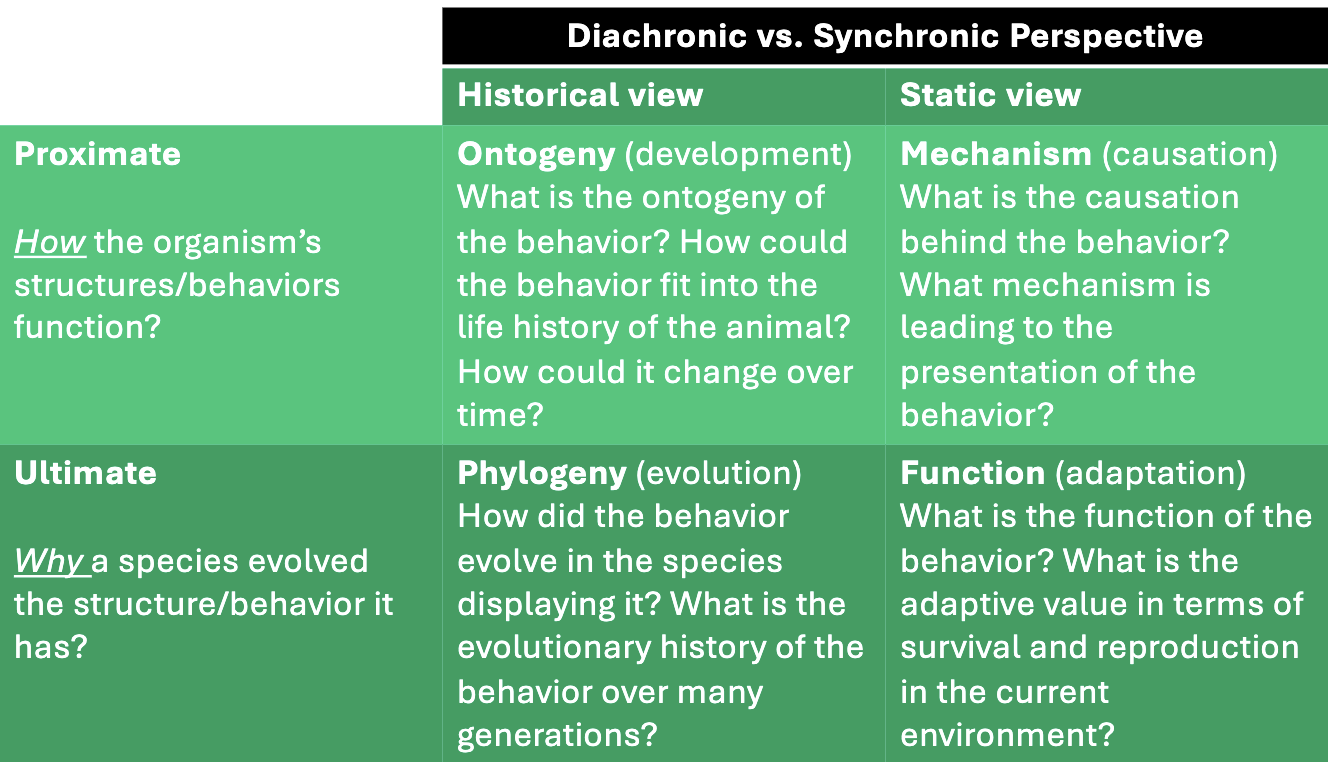Anthropology Chapter 3
1/13
Earn XP
Description and Tags
Slides: Primate Habitats and sociality
Name | Mastery | Learn | Test | Matching | Spaced |
|---|
No study sessions yet.
14 Terms
Studying behavior
-Proximate — How did it develop
-Ultimate — Why did it evolve

Mating Systems
Monogamy - Breeding (1 male:1 female)
Polygyny - Breeding (1 male: multifemale)
Polyandry - Breeding (multimale: 1 female)
Polygyandry - Breeding (multimale: multifemale)
Social Systems
Solitary/semi-solitary
One male units
Multimale/multifemale group
One female, multimale units
Fission-fussion groups - Groups always changing in size and composition
Fission-fussion determinants
-Resources
-Leadership ability
-Species density
-Predation risks
Who takes care of babies
-Mostly mothers
-Sometimes males significantly help
-Sometimes other females
Who’s in charge
-Alpha males
-Alpha/mother female
*Baboon Social Rank
*Marmosets and tamarins
-Both/unknown
Foraging Theories
-Optimal foraging theory and Marginal Value Theorem
-Geometric Framework of Nutrition
Optimal Foraging Theory
• Maximizing intake of energy or nutrient/time
• Energy or nutrient = currency
• Other needs = constraint
• Useful and testable
Optimal Foraging Theory Criticisms
Too simplistic
Dynamic nature of food and nutrient interactions unaccounted for
Constraints are not viewed as critical parts of model
Optimal Foraging Theory: Marginal Value Theorem
• “The predator should leave a patch it is presently in when the marginal capture rate in
the patch drops to the average capture rate for the habitat.” (Charnov 1976 p. 132)
• “An important assumption of the model is that while the predator is in a patch, its food
intake rate for that patch decreases with time spent there.” (Charnov 1976 p. 129)
MVT is not supported in…
Meta-analysis
Orangutans
Gibbons
Geometric Framework of Nutrition
Capital vs. Income Breeders
-Organisms that build up
energy reserves prior to
breeding, then reproduce
-Organisms that rely on
energy intake during
breeding season for
reproduction